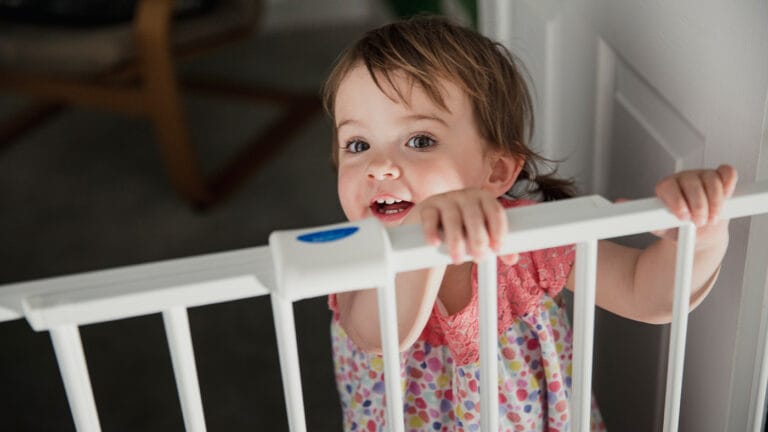An ADHD (Attention Deficit Hyperactivity Disorder) diagnosis can be an overwhelming hurdle for kids and parents alike. As the name suggests, children with ADHD tend to struggle with attentiveness, hyperactivity, and impulsivity. They may have difficulty developing the skills to manage their attention, behavior, and emotions.
Inattentiveness can appear as being distracted, seeming to “not listen,” not following directions well, needing frequent reminders, struggling to understand or complete school work, and having difficulty with organization. Hyperactivity can manifest in excessive roughhousing, inability to sit still, rushing to complete tasks, interrupting, impulsivity, or trouble taking turns, sharing, or managing emotions.
With care, your child’s ADHD symptoms can be managed so that they can find their own path through the world. Your child’s symptoms may differ from their peers, and what works for another family may not work for yours, but these nine ADHD strategies will point you in the right direction.
1) Create Structure and Routine; Keep it Consistent
Every child benefits from keeping a consistent routine to help regulate emotions and avoid triggers that could lead to temper tantrums. Keeping a consistent routine lets kids know what to expect and helps them smoothly transition from one activity to the next.
Kids with ADHD have a particularly hard time adapting to change, and they thrive when they know what to expect. That doesn’t mean your entire day needs to be scheduled out in advance, but it’s a good idea to have moments of consistency throughout the day. Brushing your teeth together in the morning or laying out clothes at night for the next day can provide waypoints to anchor a kid throughout the day. Having a structured routine is one of the key ADHD coping strategies that helps children feel more secure and focused.
2) Break Large Tasks Into Smaller, More Manageable Pieces
Children can get overwhelmed when faced with seemingly large tasks, even if those tasks might seem manageable to us. Breaking big jobs into smaller tasks can help kiddos wrap their growing minds around them.
Instead of asking your child to “clean their room,” try saying, “Put your blocks in their container,” and then regroup for the next step. Likewise, a kid with ADHD might be overwhelmed by an entire homework assignment but succeed when asked to do one or two problems at a time. This is particularly important for managing ADHD in the classroom, where breaking down tasks into smaller steps can help students stay engaged.
3) Nurture Your Child’s Abilities and Talents
Kids with ADHD experience the world differently than other kids; they may struggle to do some things that other kids do easily, but, like all kids, they’ll also have unique abilities and talents that seem to come naturally. Understanding pediatric ADHD means recognizing both the challenges and strengths that come with it, ensuring that children receive the right support to thrive.
It can be easy to focus on the things they struggle with while neglecting the ways in which they are extraordinary. A child with ADHD is also a thousand other things; their disorder can be a challenge, but it doesn’t have to be a defining one. Encouraging hobbies and strengths can be beneficial for children dealing with childhood ADHD and anxiety, helping them build confidence and resilience.
4) Focus on Positive Reinforcement
Remembering to praise a child when they do something right isn’t as easy as redirecting when they do something wrong, but it’s much more important. Kids, like the rest of us, want to feel as though they are good, successful, and loved, not as if they are always messing up.
Positive reinforcement works much better at developing good habits and relationships than punishment. If you want your child to succeed and be happy (and we know that you do), then spend more time pointing out what they do correctly than you do pointing out what they’ve done wrong. This is an essential approach in parenting techniques for ADHD, as positive feedback can significantly improve behavior and self-esteem.
5) Focus on One Thing at a Time
Getting an ADHD diagnosis might reveal your child’s behavior in a new light. You might start seeing everything they do through a new lens and want to tackle everything all at once. You’ll want to avoid that impulse, even though it comes from a good place.
Giving a kid with ADHD a dozen or more things to change, a dozen or more projects to tackle all at once, will only overwhelm them. It could overwhelm anyone! Instead, pick one thing. Choose the hill you want to climb with your child (sharing toys, reading for 10 minutes at a time, going to bed on time, etc.), and climb it together. Once you’ve climbed that hill together, you can climb the next one. This can be particularly useful for strategies for ADHD preschoolers, as younger children benefit from clear, focused goals.
6) Work Together with Teachers and Caregivers
Caring for a child with ADHD can feel overwhelming, but you don’t have to do it alone. Talk with teachers, daycare providers, family members, and other caretakers, and ensure they’re equipped to help your little one when you’re not around.
If your child is school-aged, talk with your school’s administration or special education team about a 504 plan or an IEP. Initiating that process will provide access to additional support and services, and you can collaborate with your school’s special education team to determine the appropriate needs and accommodations for your child. These steps are essential for managing ADHD in the classroom, ensuring that students receive the resources they need to succeed.
7) Communicate and Set Clear Expectations
When compared with their peers, kids with ADHD struggle with unexpected changes, which you can combat with clear communication. Give your child advance warning whenever possible if something unexpected is going to happen.
If you’re going to the store in an hour, tell them before it happens. If they are small, show them the time on the clock and where the hands will be when it’s time to go. The point is to give their brains time to cope and adapt to what’s expected.
You’ll want to set clear expectations before they are needed, and that’s equally important for consequences. Let kids know what they can expect from a day, how they are expected to behave, and the potential consequences of breaking the rules. This is particularly crucial for kids showing ADHD symptoms in kindergarten, as early intervention can set them up for success.
8) Be Flexible!
Kids with ADHD can’t adapt to change as quickly as other kids. Stay consistent in your praise and redirection, but allow some wiggle room when shifting to new rules, behaviors, or environments. Kids with ADHD have a hard time making sharp behavioral turns, and you might have to get comfortable with pushing them in the right direction a little more slowly.
That might mean creating step-goals between your child’s current and desired behavior. If, for instance, your little one struggles with impulse control and today they decided to shout at daycare instead of hit, that might be cause for celebration. We’re not where we want to be, but we’re making progress.
9) Trade in Screen Time for Physical Activity
We live in a technological world, and you probably won’t be able to keep your little ones away from screens entirely, but getting them outside and moving has a wide range of benefits. Exercise helps kids with ADHD, in particular, to regulate emotions and pent-up energy in a way that television or video games often don’t.
In an ideal world, we’d all spend more time outside and less time being sedentary, but we often have to have some give and take. Make reasonable goals that your kiddo can achieve and that you’re likely to stick with, even if that’s 10 minutes outside in exchange for an hour of TV. Don’t let perfection be the enemy of progress.
Staying patient, being flexible, and figuring out what works best for your child’s individual needs will allow them to flourish.





